This Indian Lake Is Filled With Hundreds Of Human Skeletons And Experts Don't Know How They Got There
Aadhya Khatri - Mar 01, 2021
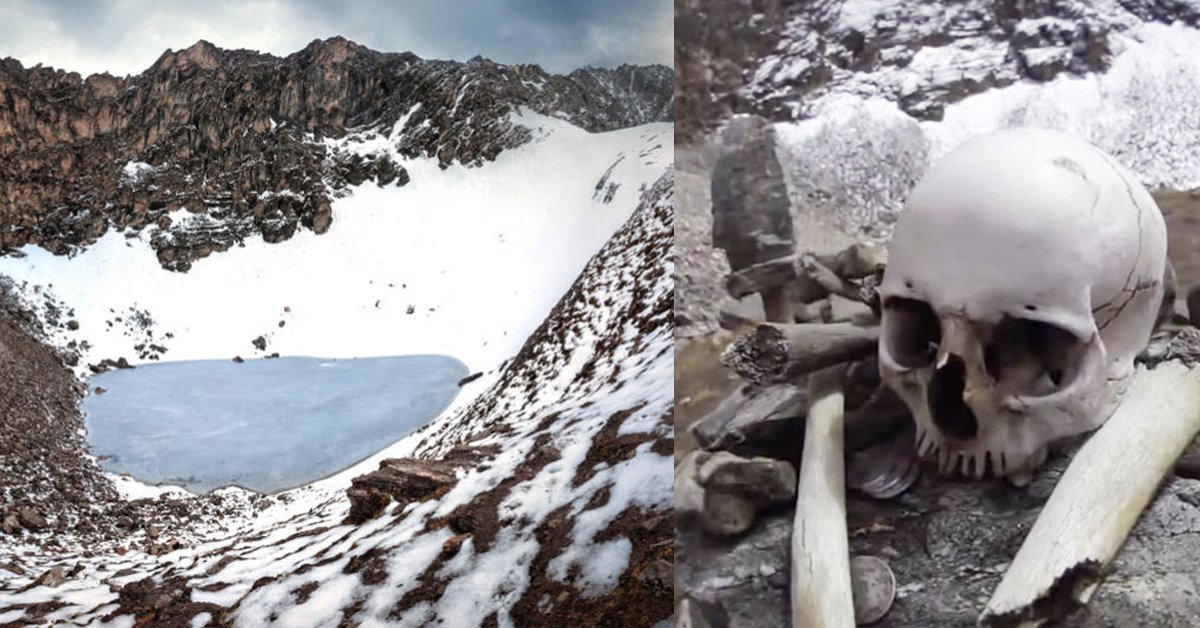
Hidden in a remote snowy valley of the Indian Himalaya is lake strewn with human skeletons
- Delhi Is The World’s Most Polluted Capital City For Three Years In A Row
- Indian Farmers Install High-Tech, Night-Vision CCTV Cameras To Protect Themselves
- Looking For The Best Electric Bike In India 2021? Take A Look At These
Hidden in a remote snowy valley of the Indian Himalaya is a lake strewn with human skeletons.
The Roopkund Lake is 5,029 meters above sea level at the bottom of Trisul – one of the highest mountains of India. The lake was discovered in 1942 by a British forest ranger on patrolling duty.
The lake remains frozen most of the year and only when the snow melts that the hundreds of skeletons are visible. Some of them still have well-preserved flesh on. To date, the remains of 600 to 800 people have been discovered there.
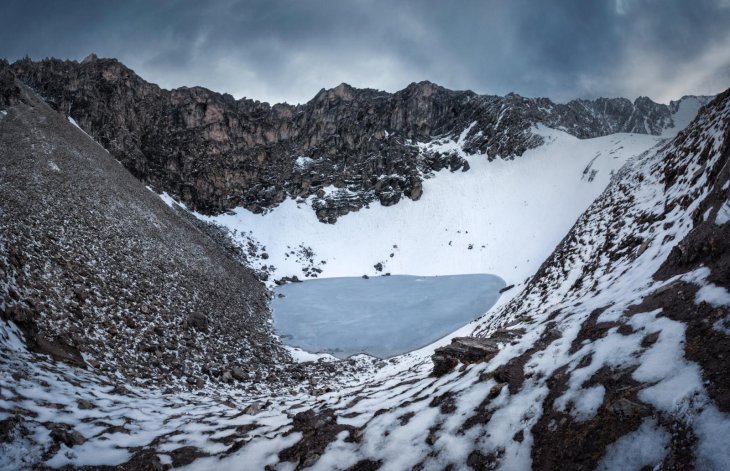
For more than 50 years, experts have been studying the remains, trying to answer a lot of questions regarding this lake.
A theory claims that the skeletons belonged to an Indian king, his wife, and their servants, who died in a blizzard 870 years ago.
Another said the remains were Indian soldiers who invaded Tibet in 1841. After being beaten, around 70 of them had to find their way back over the mountains and perished on the way.
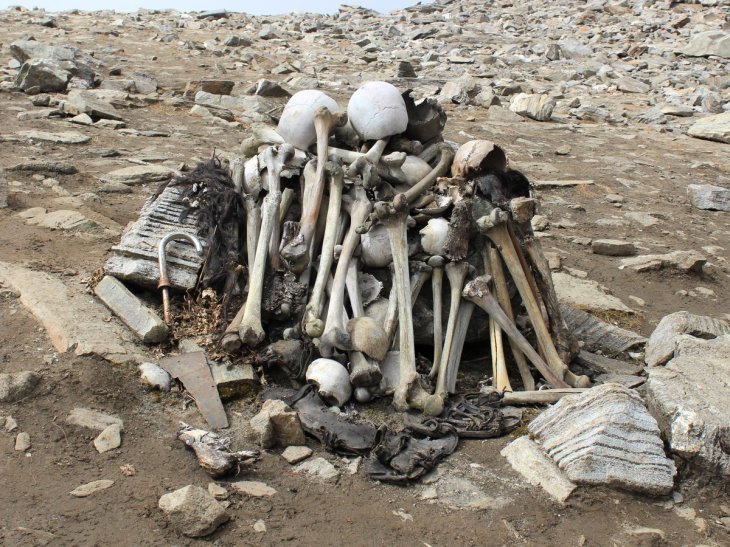
A theory assumes the lake serves as a cemetery for victims of an epidemic. Villages in the area have a folk song about a hail storm created by Goddess Nanda Devi that killed anyone who went past the lake.
Studies revealed that the majority of the people buried under the lake were tall, at middle age from 35 to 40 years old, and in good health. There are no children and babies, some of the skeletons belong to elderly women.
It was believed that the skeletons were of a group of people who died in a disaster in the 9th century. However, a study lasts for 5 years with the participation of experts from 16 institutes in India, Germany, and the US ruled out that assumption.
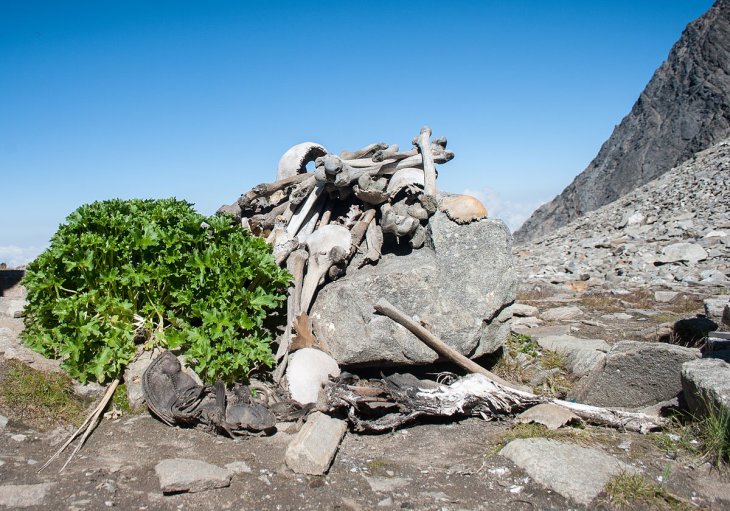
Experts carbon-dated and analyzed the remains of 38 bodies, 15 of whom are women, and found that some of the skeletons dated back to 1,200 years. They also concluded that they didn’t die at the same time and time separation is as long as 1,000 years.
According to Eadaoin Harney, the study’s lead author, the finding upends all theories pointing to a single catastrophic event. While so far, it’s still unclear what happened to the people who died at Roopkund Lake, experts can now say with confidence that the deaths weren’t caused by one single event.
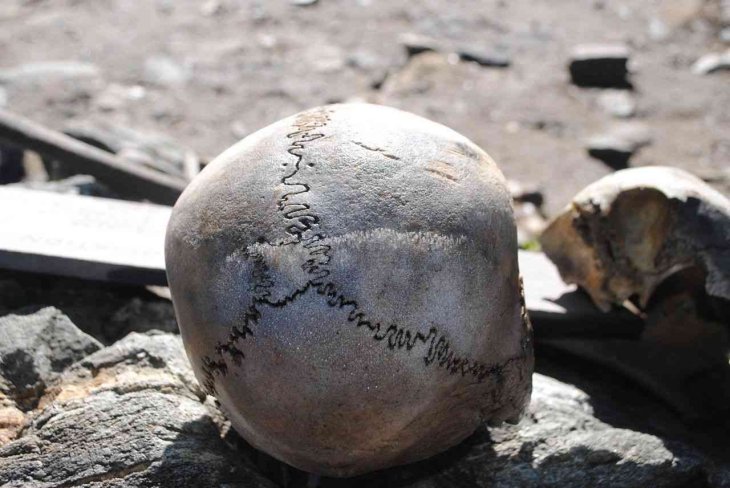
Interestingly, the remains are found to be diverse. The genetics of some of them are similar to those of people living in present-day South Asia. Some others relate to people who live on the Greek island of Crete. The people from South Asia appear to come from different populations.
Ms. Harney said some of them have common traits with people from the north while others share similarities with those from the south of the subcontinent.
So the questions now are "Did these groups of people travel to, or past the lake over a period of a few hundred years?" "Did a single event kill some of them?"
The lake doesn’t locate on a trade route and the people who died there have no goods nor weapons on them. Studies also found no traces of viruses that could possibly cause a disease that took their lives.
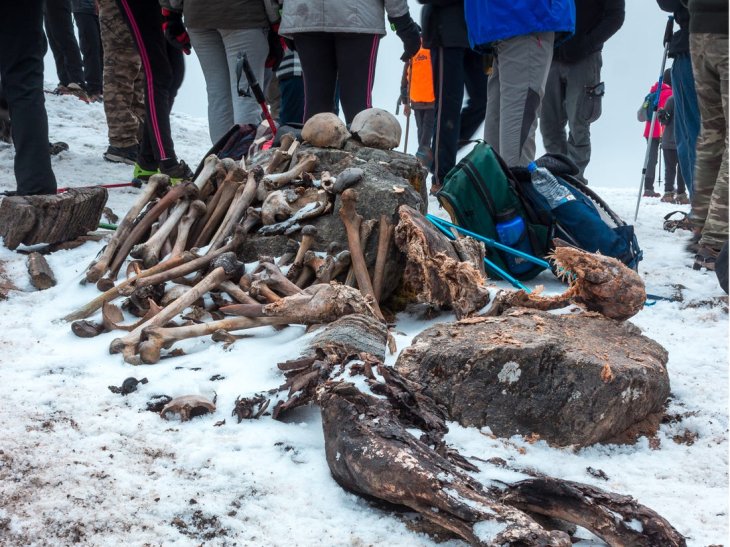
Another theory suggests that a pilgrimage passing by the lake might explain why people traveled there. Studies revealed that it wasn’t until the 19th century that pilgrimage in the region appeared. However, some inscriptions in temples in the area suggest even earlier origins.
This leads experts to believe that some skeletons under the lake belonged to pilgrims. However, one mystery remains: how people of eastern Mediterranean origin ended up at a lake in one of India’s highest mountains as it’s highly unlikely that European people would make such a journey to join a Hindu pilgrimage.
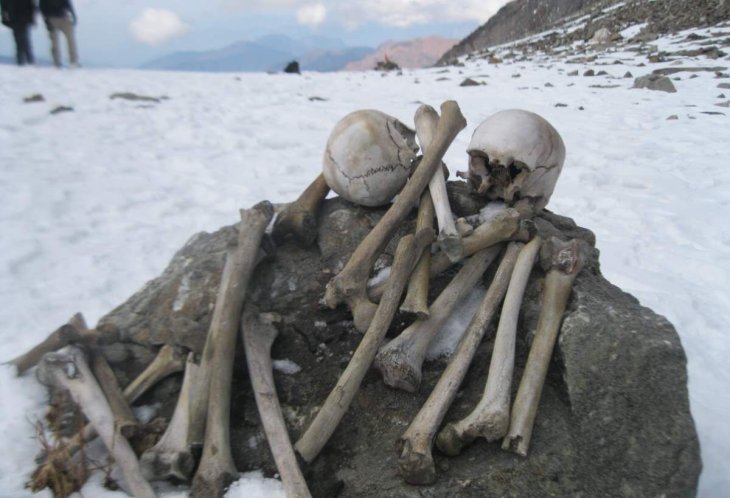
An explanation suggests that these people were indeed from eastern Mediterranean land but they lived in the region for many generations.
Until this day, experts are still searching for answers as to why so many people ended up dead in a lake in a remote area of India.
Featured Stories

Features - Jul 01, 2025
What Are The Fastest Passenger Vehicles Ever Created?

Features - Jun 25, 2025
Japan Hydrogen Breakthrough: Scientists Crack the Clean Energy Code with...

ICT News - Jun 25, 2025
AI Intimidation Tactics: CEOs Turn Flawed Technology Into Employee Fear Machine

Review - Jun 25, 2025
Windows 11 Problems: Is Microsoft's "Best" OS Actually Getting Worse?

Features - Jun 22, 2025
Telegram Founder Pavel Durov Plans to Split $14 Billion Fortune Among 106 Children

ICT News - Jun 22, 2025
Neuralink Telepathy Chip Enables Quadriplegic Rob Greiner to Control Games with...

Features - Jun 21, 2025
This Over $100 Bottle Has Nothing But Fresh Air Inside

Features - Jun 18, 2025
Best Mobile VPN Apps for Gaming 2025: Complete Guide

Features - Jun 18, 2025
A Math Formula Tells Us How Long Everything Will Live

Features - Jun 16, 2025
Comments
Sort by Newest | Popular